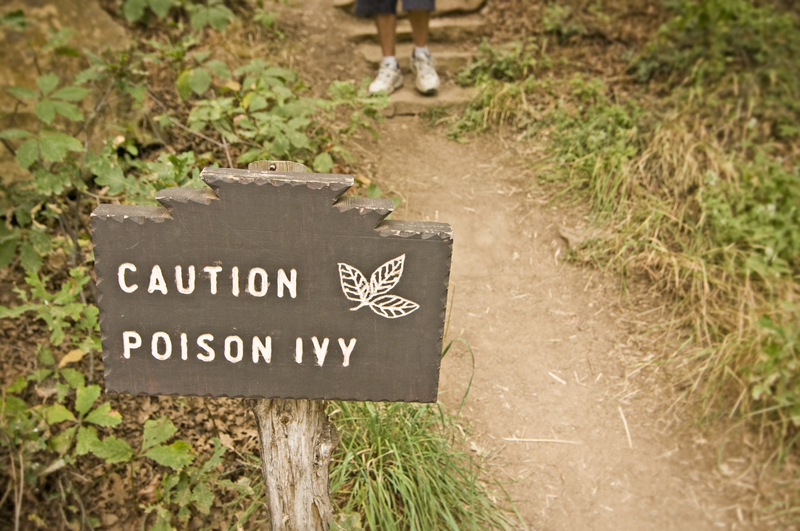Your Ultimate Cheat Sheet: 3 Tips for Controlling Weeds
Posted on 17/06/2025
Your Ultimate Cheat Sheet: 3 Tips for Controlling Weeds
Dealing with weeds can be a nagging challenge for both seasoned gardeners and casual lawn enthusiasts. These persistent invaders steal nutrients, water, and sunlight from your desirable plants, threatening the health and beauty of your landscape. But with a strategic approach, you can reclaim your turf! Welcome to Your Ultimate Cheat Sheet: 3 Tips for Controlling Weeds, a comprehensive, reader-friendly guide packed with practical weed management tips and expert advice. Let's dive into the world of efficient weed control and ensure your garden thrives--weed-free!
Understanding the Weed Problem
Before exploring top weed management strategies, it's crucial to understand what weeds are and why they're such a problem. Weeds are simply unwanted plants that grow where they're not supposed to. They compete with your crops, flowers, or grass for crucial resources and can even harbor pests and diseases.
Common Types of Weeds You'll Encounter
- Annual Weeds: These complete their lifecycle in a single year (e.g., crabgrass, chickweed).
- Perennial Weeds: These return year after year via roots or seeds (e.g., dandelions, bindweed).
- Biennial Weeds: These take two years to complete their life cycle (e.g., garlic mustard).
Recognizing the type of weed helps you select the best control method for your unique garden situation.

3 Expert Tips for Weed Control & Weed Prevention
Now, let's get down to the essentials. Here are three tried-and-true tips for controlling weeds in your garden and lawn. Follow these to enjoy a lush, healthy landscape all year long.
Tip #1: Practice Mulching - Nature's Weed Barrier
Mulching is one of the most effective and eco-friendly weed control strategies. A thick layer of organic or inorganic mulch suppresses existing weeds and prevents new ones from sprouting by blocking sunlight from reaching weed seeds.
How to Mulch for Optimal Weed Suppression
- Choose the Right Mulch:
- Organic mulches: wood chips, shredded bark, straw, grass clippings, compost (add nutrients as they break down).
- Inorganic mulches: black plastic, landscape fabric, gravel (long-lasting but won't improve soil structure).
- Apply Generously: Lay down at least 2-4 inches of mulch around your plants and beds.
- Weed First: Always remove existing weeds before applying mulch for maximum effect.
- Maintain Mulch Depth: Replenish organic mulches as they decompose to keep coverage consistent.
Mulching not only controls weeds, but also conserves moisture, regulates soil temperature, and boosts soil health. This makes it a valuable tool in your overall garden maintenance plan.
Tip #2: Cultivate Healthy, Dense Plant Cover
Perhaps the most natural way to control weeds is to grow a healthy, dense canopy of desired plants. The denser your grass, flowers, or vegetables, the less sunlight and bare ground is available for weeds to establish themselves.
Best Practices for Outcompeting Weeds
- Choose competitive plant varieties: For lawns, opt for vigorous, quick-spreading grass species like tall fescue or Kentucky bluegrass.
- Plant at correct spacing: Don't leave open patches; follow recommended planting densities.
- Fertilize and water appropriately: Healthy plants outgrow and shade out weeds, limiting their spread.
- Inter-crop and companion plant: Mix groundcover or fast-growers among your main crops to fill space and smother weeds.
Think of it this way: a thick, lush garden bed or lawn is the best long-term weed prevention strategy available!
Tip #3: Master Manual and Mechanical Removal
Despite your best efforts, sometimes weeds still appear. That's where prompt, regular removal comes in. Manual and mechanical weed removal targets weeds before they can set seed and multiply.
Key Techniques for Effective Weed Removal
- Hand Pulling: Works best after rain or watering when soil is moist. Gently grasp weeds at the base and pull slowly to remove the roots.
- Use Weeding Tools: Tools like hoes, dandelion diggers, or weed pullers can reach deeper roots with minimal soil disturbance.
- Hoe Regularly: Shallow hoeing disrupts weed seedlings before they become established.
- Avoid Tilling Excessively: Deep tilling can bring up dormant weed seeds to the surface. Opt for minimal soil disturbance when possible.
- Dispose Properly: Bag or compost removed weeds away from your garden to prevent re-infestation.
Consistent, timely manual weeding is a cornerstone of effective weed management. Even a few minutes each week can make a huge difference in keeping your garden under control.
Bonus: Integrated Weed Management - Combining Approaches
No single method is 100% effective. For the ultimate weed control, combine the above strategies for a comprehensive, tailored approach:
- Use mulch in beds and around trees for all-season weed prevention.
- Promote thick plant cover on lawns or in veggie patches to shade out weed seeds.
- Spot-weed manually before populations explode.
- Consider cover crops in the off-season to block seasonal weeds and boost soil fertility.
This is often referred to as Integrated Weed Management (IWM)--a balanced combination of cultural, physical, and (optional) chemical methods to keep your landscape healthy and vibrant.
Other Top Weed Control Tips and Tricks
Want to take your weed prevention and control to the next level? Here are a few more expert weed control tips and answers to common questions:
Stay Vigilant with Regular Monitoring
- Inspect your garden weekly for early signs of weeds.
- Remove isolated weeds promptly--a single dandelion can launch hundreds of seeds!
Water and Fertilize Strategically
- Water deeply but less frequently, focusing on your plants, not the entire bed (drip irrigation is ideal).
- Feed your desired plants to help them outcompete weed growth.
Avoid Letting Weeds Go to Seed
- Always remove flowering or seeding weeds immediately.
- Deadhead and mow if necessary to avoid new weed seed spread.
Embrace Season-Long Vigilance
- Start control measures early in spring and persist through autumn.
- Use pre-emergent mulch or cover crops to prevent fall and winter weeds.

Frequently Asked Questions About Weed Control
What is the most effective way to prevent weeds?
The most effective way to prevent weeds is to use a combination of thick mulch, healthy plant cover, and regular manual removal. These methods deprive weeds of the resources they need to grow and stop them before they spread.
Is it necessary to use chemical herbicides for weed control?
Not always. Organic and mechanical methods are often sufficient, especially for home gardens and lawns. If using herbicides, always follow label instructions, target only affected areas, and consider safer options like spot treatments.
How often should I weed my garden?
It depends on your garden's conditions, but weekly inspections and quick spot-weeding can keep weeds at bay before they get out of control.
Do all mulches work equally well against weeds?
Organic mulches (like bark or compost) suppress weeds as they break down and enrich your soil, while inorganic mulches (plastic or gravel) provide a physical barrier. The choice depends on your aesthetic preference, maintenance levels, and garden type.
Final Thoughts: Master Weed Control for a Healthy Garden
With these three proven tips for weed control--mulching, dense plant cover, and prompt manual removal--you'll be equipped to tackle even the toughest weed invasions. By integrating these strategies into your gardening routine, you'll cultivate not only a stunning landscape but also a healthier ecosystem resistant to pests and disease.
Remember: Weed management is a continual process, not a one-time event. Stay proactive, patient, and persistent, and enjoy the rewards of a weed-free garden all season long. Bookmark Your Ultimate Cheat Sheet: 3 Tips for Controlling Weeds and return whenever you need inspiration or guidance on effective weed control solutions!
Happy gardening, and may your plants always outcompete your weeds!

